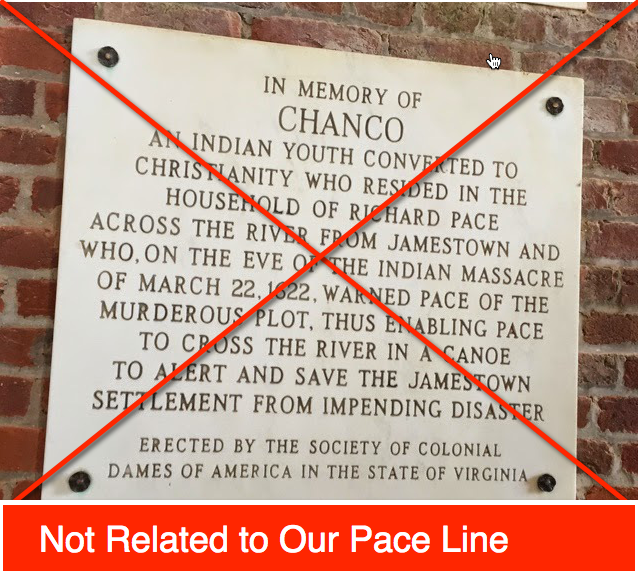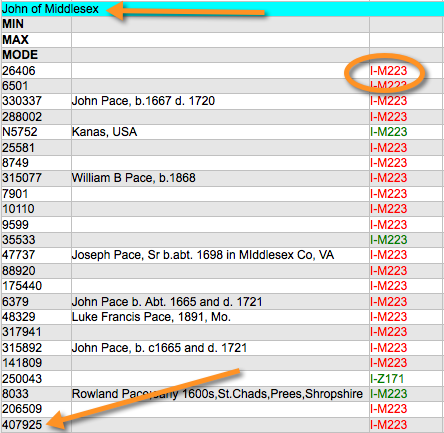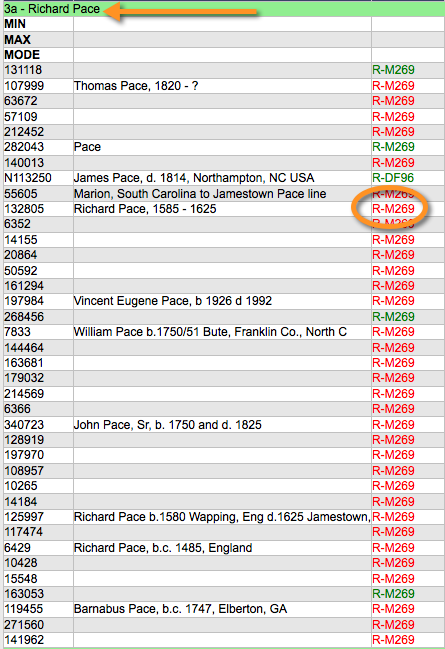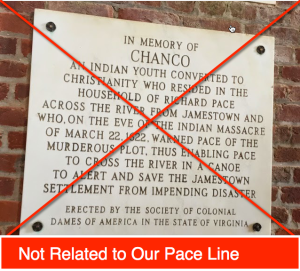
I blogged earlier this week about just receiving the much-anticipated results for a Y-DNA test that proved my husband’s Pace line is not genetically related to the same line as Richard Pace (1583-1627) of Jamestown, despite a long-time widely perpetuated claim made via an accidental (or possibly even intentional) paper trail error by some Pace researcher.
On the plus side, this DNA test did confirm that my husband Jeff’s family is descended from the same male-line as William Henry Pace (1745-1815), a member of General George Washington’s elite bodyguard unit know as the Commander in Chief’s Guard.
Armed with this new information though, I now face the unpleasant chore of cleaning up my genealogy house due to this fallout.
Wasted Efforts?
I have not invested much time or original research very far back into the Pace line, because a) I knew I’d have to visit local repositories out in Virginia and have not yet had the time, and b) shortly after reviewing what others have researched on this surname, I learned of the DNA controversy and put my research time and dime on hold until we could get our hands on a male-line Pace to test from our family. So no loss there for me.
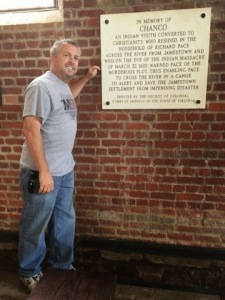
When Jeff and I traveled with my parents to Washington, D.C. and Virginia last fall, we planned a full day road trip from our Massanutten mountain-top timeshare condo across the state of Virginia to historic Jamestown. Any regrets now? Nope. We would have visited historic Jamestown anyway. After all…. it is historic Jamestown!
On that trip, we had hoped to have enough time in the late afternoon and early evening to take the ferry across the James River to drive by the former location of Richard Pace and wife Isabella Smyth’s Ancient Planter land grant, Pace’s Paines. But we ran out of time and decided against it since it would have has us all back to our condo well past midnight (my parents are usually in bed by 9:00pm). I was a bit bummed at the time. However Jeff and I now joke about how happy we are that we did not waste that extra time.
Cleaning House
I do have a bit of clean-up to do now, most of which will have to wait a couple of weeks until I am done with my summer class.
My Research
- Deleting all Pace ancestors and collateral relatives from my Ancestry tree (which I consider a “leads” tree, not my confirmed-findings tree), beyond William Henry Pace of the Commander-in-Chief Guard (CnC Guard).
- Deleting all Pace ancestors and collateral relatives from my research database, extending back beyond William Henry Pace of the CnC Guard.
- Deleting the same for Richard Pace’s wife Isabella Smyth.
- For all Evernote notes I have saved over the years:
- Merge all notes for each ancestor or relative beyond William Henry Pace of the CnC Guard into a single master note for each of those individuals. I do not want to delete all those Notes, lest I ever need them for future reference.
- Add a “VOIDED” prefix to each newly merged master Note, so that it is immediately clear when viewing a note or viewing a list of notes that these Paces notes are not part of my research line.
- Remove Anhentafel number tags, the “Pace” surname tag, and any research-action-oriented tags from those notes (ex: “to confirm”).
- Move those notes out of my active research notebooks, and into a newly created “Voided Research” notebook.
- Do the same for the Isabella Smyth line (his wife).
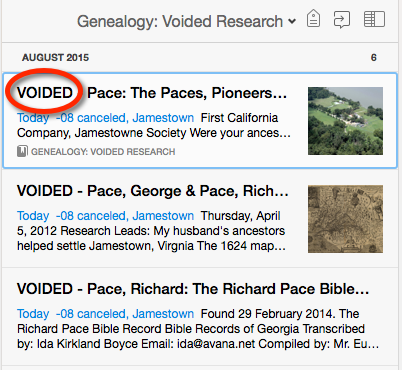
This Blog
- Add a prominently featured updated note to the top of every blog post about Richard Pace or his wife Isabella Smyth, noting the false connection. Like my Evernote research notes, I do not want to delete these posts. For one thing, I do not delete blog posts even if they become obsolete–I add a correction or a link to more updated information. I also want other Pace researchers to be aware of this fallacy, so they do not replicate the same error in their own work.
- Make any necessary corrections to blog posts about William Henry Pace of the CnC Guard, which might reference Richard Pace and Isabella Smyth.
- Remove the Genealogy Snapshot box from these posts, which displayed the descendancy route down to my husband.
- Add a “VOIDED” note to the archive view of all blog posts pertaining to these two individuals. Again, I do not want to delete them from lists like our Surnames List, but I want to make it clear to others that these are false findings.
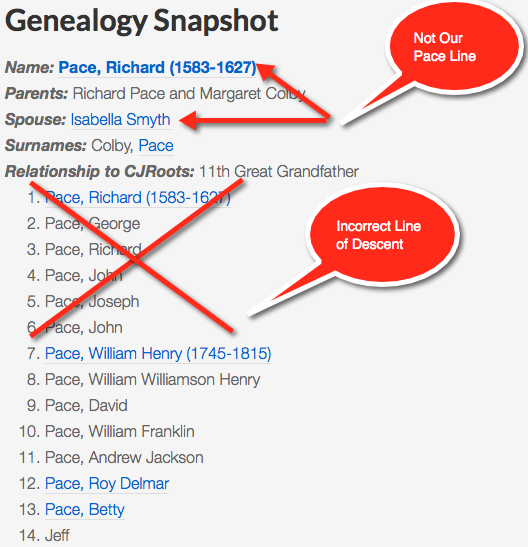
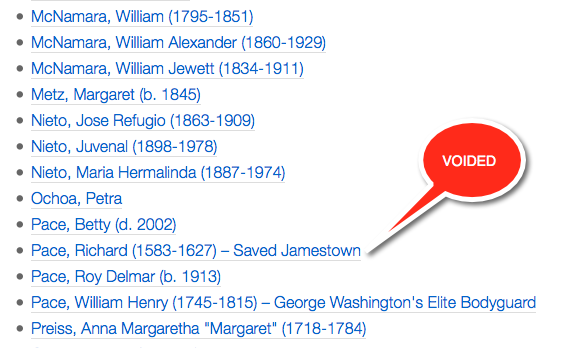
Next Steps
After all necessary clean-up, I plan to make this line a major research focus for 2016.
As I mentioned in my last post, the Y-DNA test only proves that my husband’s Pace line is descended from the same line from which William Henry Pace the CnC Guard also descends (the John Pace of Middlesex line). The test does not prove our family is descended directly from William Henry Pace. After the disappointment of learning we can no longer claim the Jamestown connection, I would like to be able to provide my husband’s cousins with a conclusive answer about the CnC Guard Pace. I am hoping the more advanced DNA education I will receive at SLIG this January will help me better analyze the DNA evidence against the paper trail evidence. And I definitely have to now buckle down and study that paper trail evidence myself.
Since the DNA test has proven our Pace line descends from the John of Middlesex line, I need to now begin researching John of Middlesex and his descendants. This is not a name that has been on my research radar until now.
I think this will be a very interesting case to research and study to share!
